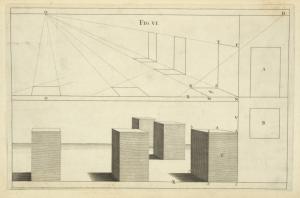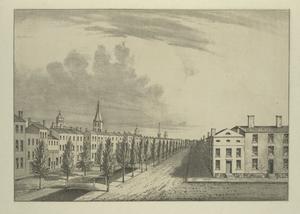In high school, when I learned about vanishing points, I was amazed at how they were used to "real"-ize any object from any angle. Now, I could actually draw a table instead of some misshapen, unrecognizable scribble. I could draw a whole scene and make each aspect of it the correct size in relation to the rest of the scene. It was as if I were nearsighted and someone had given me the key to clear vision.... ok. perhaps I am exaggerating a little bit, but you get the point.
Needless to say, the concept of a vanishing point is probably one of the only things I remember from my high school art class. Therefore, when I came upon a reference to it in Little Dorrit, it caught my attention. In this case, Charles Dickens uses the concept allegorically in reference to one of the character's love life.
Looking back upon his own poor story, she was its vanishing-point.
Every thing in its perspective led to her innocent figure. He had
travelled thousands of miles towards it; previous unquiet hopes and
doubts had worked themselves out before it; it was the centre of
the interest of his life; it was the termination of everything that
was good and pleasant in it; beyond, there was nothing but mere
waste and darkened sky. (http://www.literaturecollection.com/a/dickens/little-dorrit/64/)
As I read this paragraph, it entered my mind that although this is a fitting allegory for romance, it is even more apropos in reference to Christ. He is this world's true vanishing point. Everything in life gets its proper perspective in relation to Him. He is the Alpha and the Omega, the Beginning and the End. Through the distortion caused by sin, we lose our proper perspective on everything. We get our perspective back only when we focus on Christ.
Do you have any thoughts about it?



No comments:
Post a Comment